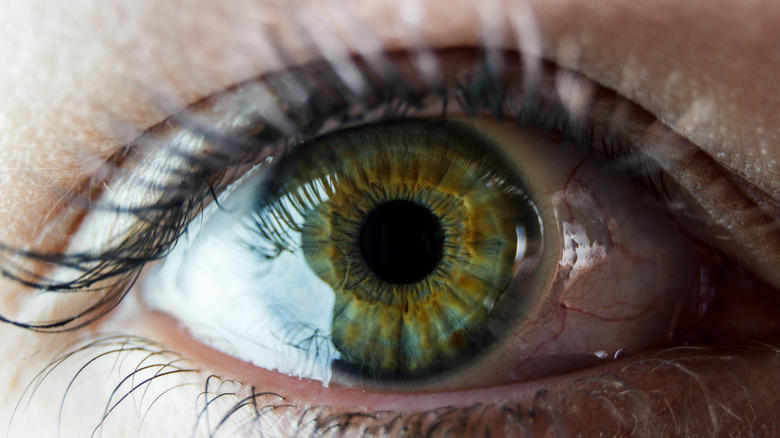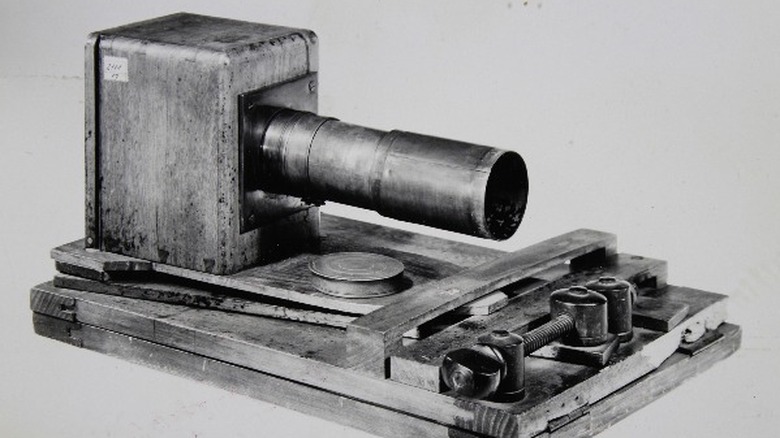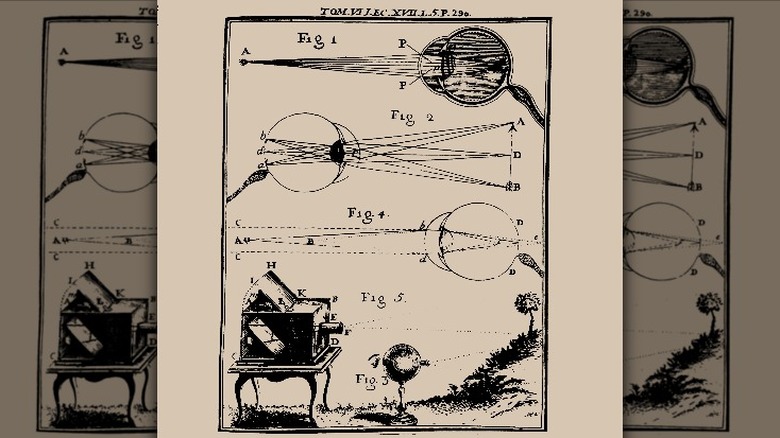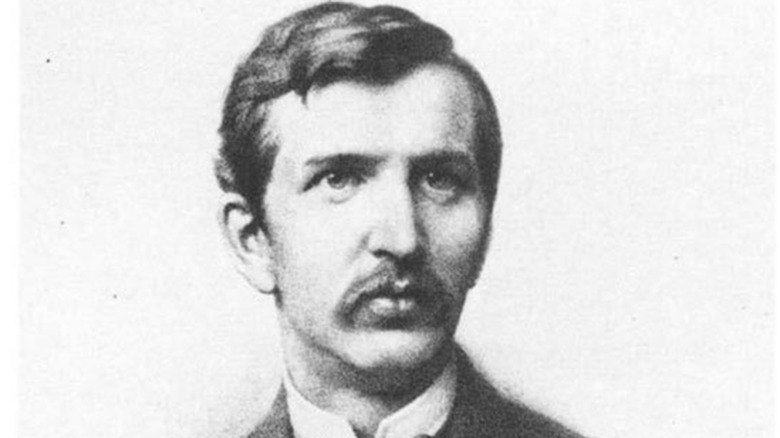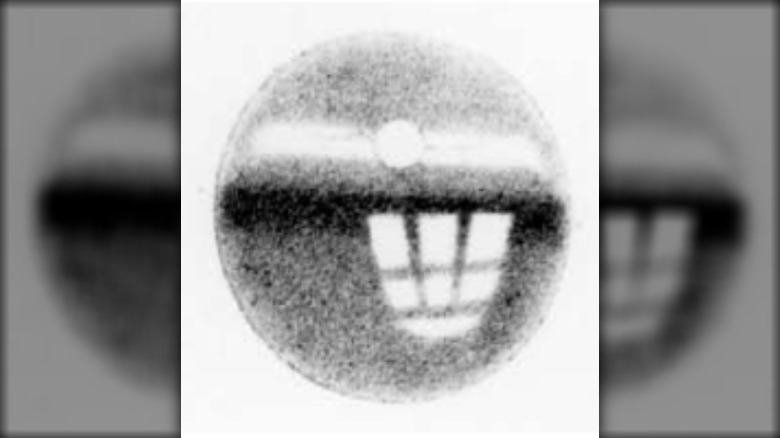Why Scientists Once Thought The Retinas Of The Dead Held Memories
If you were to rank to tropes of modern crime shows, ranking high alongside machiavellian psychopaths and troubled investigators would be the awe-inspiring possibilities of forensic science in solving cases that traditional detective work couldn't crack. Going well beyond investigative techniques such as finger-printing, in the 21st century, the field of forensics has presented both real-life investigators and storytellers working in the crime genre with a case-closing deus ex machina: DNA. The promise that criminals could be identified by minute cell samples left at the crime scene has seemingly pushed crime-solving to new frontiers, though as noted by The Atlantic, the reality of the technique doesn't quite live up to the promise, with crime scenes easily contaminated and police technicians liable to misinterpret testing results and draw unfounded conclusions.
The history of policing is littered with examples of investigators looking to unearth novel techniques to identify criminals. In the 20th century and beyond, various police forces have been known to refer to alleged psychics for help in their cases when all other hope has seemed lost. In the Victorian era, scientists, police, and the press became increasingly obsessed with a new scientific process that many believed could change the nature of criminal investigation forever: Optography, the art of revealing the last thing a dead person saw by lifting it, like a photograph, from the retina of the eye.
Science and mystery in the 19th Century
The concept, whether plausible today or not, was that an image or "optogram" might persist in the eye of a deceased person. To take it a step further, such images might be used in crime investigation — in the identification of murderers, for example. The emergence of optography is understandable when we look at how science was developing in the 1800s and how fresh revelations about the nature of life on earth were assimilated into the culture of the time.
As the Museum of Optography notes, new scientific discoveries and industrial developments were changing the way people saw the natural world, with the possibilities of what science revealed becoming the driving force of 19th-century art. Mary Shelley's 1818 novel "Frankenstein," for example, tells the story of a scientist who brings to life a human assembled of cadaverous body parts. Though never explicitly discussed in the work itself, Shelley later revealed that the imagined reanimation process was influenced by the practice of Galvanism: the attempt to reanimate dead tissue with the use of electricity, pioneered by the Italian scientist Luigi Galvani (per Public Domain Review). Three years before the invention of the electric motor, Shelley was writing under the speculation that electric power — still mysterious in its nature — might be the force that underpinned human life itself.
Another great development of the Victorian era was the camera, with the invention of the daguerreotype camera in 1839. Like the harnessing of electricity, the new discovery would have repercussions for how Victorians saw the natural world.
The origin of optography
The Museum of Optography notes that after the introduction of glass photographic plates in 1851, a plethora of urban legends emerged as a result of the new technique, such as stories of victims of lightning strikes having their images cast onto nearby window panes. Likewise, the use of glass plates in photography arguably cemented in popular consciousness the idea that the new device was a "mechanical eye," which in turn suggested that the little-understood human eye might function along the same lines as a photographic camera.
The same source notes an intriguing tidbit circulating in magazines and newspapers on both sides of the Atlantic, which claimed "that the last image formed on the retina of the eye of a dying person remains impressed upon it as on a daguerreotype plate." From there, it's not much of a leap to wonder if the eyes (or even eye) of a murder victim might have somehow recorded an image of the guilty criminal. Per Neuroscientifically Challenged, the speculation was attached to the story of a Chicago murder case, in which investigators were said to have found an image of a man on the retina of a murder victim that may have been that of his killer. But despite making headlines, the story was never scientifically verified.
Franz Christian Boll
It seems that the concept of optography had emerged somewhat organically in the 1850s as a result of the growing belief that the human eye was, in essence, a naturally-formed camera, though as the Museum of Optography states, there was little scientific evidence to back up the idea.
And that is how it remained until the 1870s, and the innovative work of Franz Christan Boll, a German physiologist. Though he died at the age of just 30, Boll was the discoverer of rhodopsin, which according to the Museum of Optography is a pigment in the rod cells found in the eye which changes from reddish-purple to clear upon its exposure to light, a discovery that seemingly confirmed the human eye as a photographic mechanism.
Boll's experiments around rhodopsin continued, with his work tantalizingly suggesting that the applicable use of optography might just be within reach. As noted by Neuroscientifically Challenged, Boll noted that in the eye of a frog kept in a dark room with just a single shaft of light, a section of the frog's retina would have its rhodopsin bleached in the same shape as the light source. This shape is known as an optogram.
Wilhelm Friedrich Künhe
Franz Boll's experiments into the nature of rhodopsin were taken up by his colleague, Wilhelm Friedrich Künhe, who sought to elucidate the implications and practical uses of rhodopsin bleaching on the human retina. Kühne began, like Boll, by experimenting on frogs, but soon turned to rabbits to try to extract more and more detailed optograms from the eyes of recently deceased specimens. His greatest achievement (pictured above) came from the eye of a rabbit and shows a startlingly detailed image of a window the retina was exposed to at the moment of the creature's death, per Neuroscientifically Challenged.
However, Künhe soon identified several difficulties in obtaining optograms from the eyes of recently deceased creatures. To begin with, the eye had to be withdrawn and processed immediately after the moment of death; otherwise, the rhodopsin in the retina would regenerate before the optogram could be captured. And to complicate matters further, Künhe realized that the eye had to be set at a fixed point, otherwise the optogram would be overlaid repeatedly with the same light exposure, blurring the image.
Despite refining his technique, Kühne became increasingly aware that even at their most successful, optograms offered nothing more than a rudimentary impression of the light sources they were exposed to, and were of little use scientifically or in criminal investigations. In 1880, he dissected the eye of a man hanged not too far from his laboratory in Heidelberg: though bleaching had occurred, it could not be said to offer any identifiable image.
The persistence of optography
Science may have largely debunked the practical applicability of optography through the pioneering work of Boll and Kühne, but the concept nevertheless enjoyed a long half-life in popular fiction. In 1902, the French writer Jules Verne, author of "Twenty Thousand Leagues Under the Sea" and "Around the World in Eighty Days," published "The Kip Brothers," the ending of which concludes with the titular brothers being cleared of murder through the use of an optogram, and even takes pains to explain the supposed science behind the process, according to the journal Science Fiction Studies.
Optography continued to be pushed as a potential policing technique even as late as 1920, when The New York Times criticized a scientist assisting in a murder case for not having examined the eyes of the victim for optograms by which the killer might have been identified, according to Neuroscientifically Challenged. More recently, optography has made its appearance on the silver screen, serving as a plot point in the steampunk Will Smith vehicle "Wild Wild West," released in 1999.
